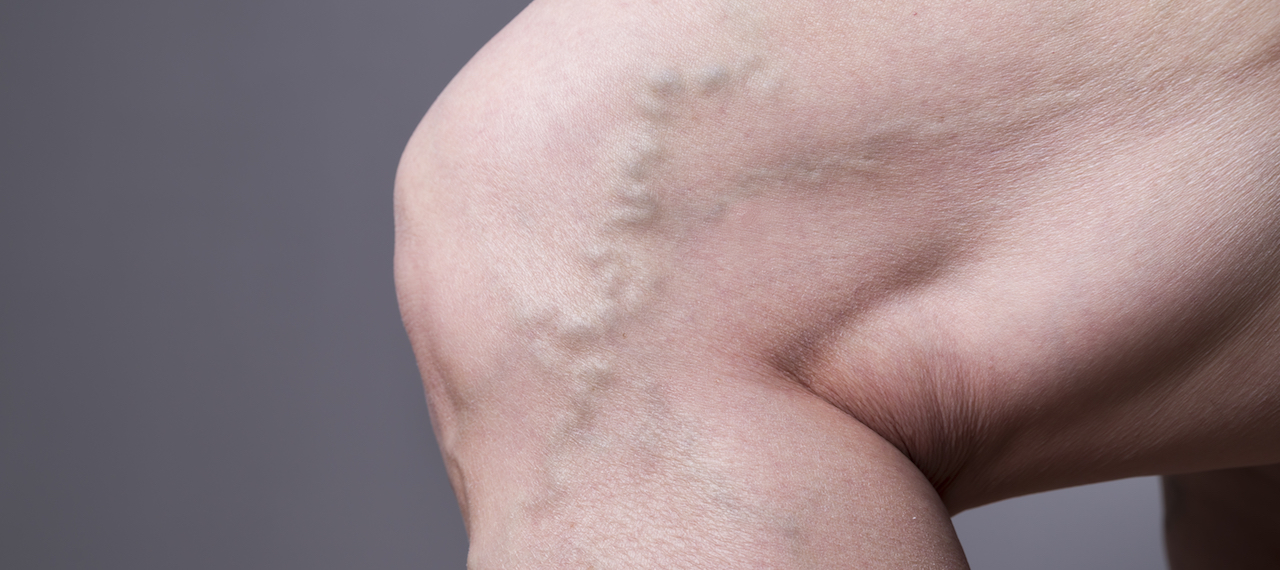They’re unsightly and look a bit like worms underneath the skin – varicose veins are an unfortunate side-effect of getting older. Commonly occurring among women, especially those who’ve had more than one pregnancy, these pesky irritants can also occur after weight gain. If you stand for long periods of time, you’re also at higher risk of varicose veins.
How they develop
Varicose comes from the Latin word: varix, which means twisted. They’re caused by stretching that occurs in the veins of the legs that are close to the skin surface, making the blood pool in the legs. They may bulge and can be really painful and uncomfortable.
Veins are blood vessels which carry blood from your body’s tissues back to your heart. The heart then pumps the blood to the lungs to get oxygenated, and this oxygen-rich blood then is pumped throughout the body via your arteries. Veins have one-way valves that help keep blood flowing one way – toward your heart. However, if these valves become weak or damaged, they stop working properly and blood can pool in the veins causing them to swell. Raised pressure in these veins can also lead to the development of spider veins and areas which look bruised.
More severe varicose veins can also cause poor circulation, which may lead to other medical problems, but
the good news is that for most, varicose veins are fairly harmless.
Conditions that can cause varicose veins
- Varicose eczema. Dry, itchy skin may develop from a lack of blood flow. It’s more common if you have eczema in other areas of the body, and is sometimes treatable with a steroid cream.
- Skin ulcers. Lack of blood supply may starve the skin tissue of oxygen, causing it to degrade. This may leave you with venous ulcers, generally around the ankles. If the ulcers become infected, you could need antibiotics.
- Lipodermatoscleosis. The skin around the ankles may become hardened and discoloured from long-term damage and pressure injury. A condition called “champagne ankles” may also develop as the scar tissue contracts and skin above the ankles bulges.
- Panniculitis is similar to lipodermatosclerosis, but rather than being hardened and yellow, the skin is inflamed and sore around the ankles.
- Lymphoedema. After years of unrelieved pressure, the lymph system may not work well. This may cause lymph fluid to accumulate and you would have extreme swelling. Lymphoedema is not easily treatable.
- Superficial thrombophlebitis. Because the blood is allowed to accumulate, the sluggish flow may cause it to clot. In some cases, the clot may remain localised, resulting in reddened skin. In other cases, the clot may continue to grow in size, which will increase the risk of pulmonary embolism, particularly if the clot develops close to a vein junction or is in deeper tissue.
If you have any pain or excessive swelling, speak to your doctor.
Can varicose veins be cured?
In most cases, varicose veins are treatable. Patients with severe or large varicose veins may need traditional surgical vein removal or “vein stripping” but if you have less severe varicose veins, there are “lighter” procedures.
Newer options include Endovenous Laser Therapy (EVLT) in which a small catheter containing a laser fibre is inserted through a small skin incision into the vein. In short pulses, the laser heats the vein tissue causing it to collapse and seal.
You may also be treated with the Clarevein procedure in which a microcatheter is introduced into the vein, allowing injection of a sclerosing solution, causing the vein to close over a period of time. The endovenous laser thermal ablation procedure has only a short recovery time and the Clarivein procedure generally allows the patient to immediately return to your normal routine.
References

